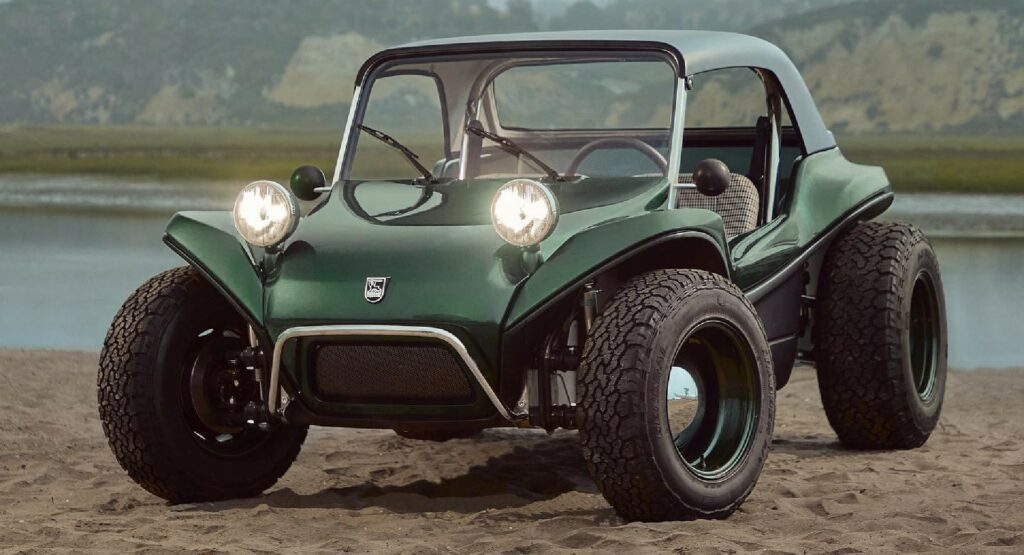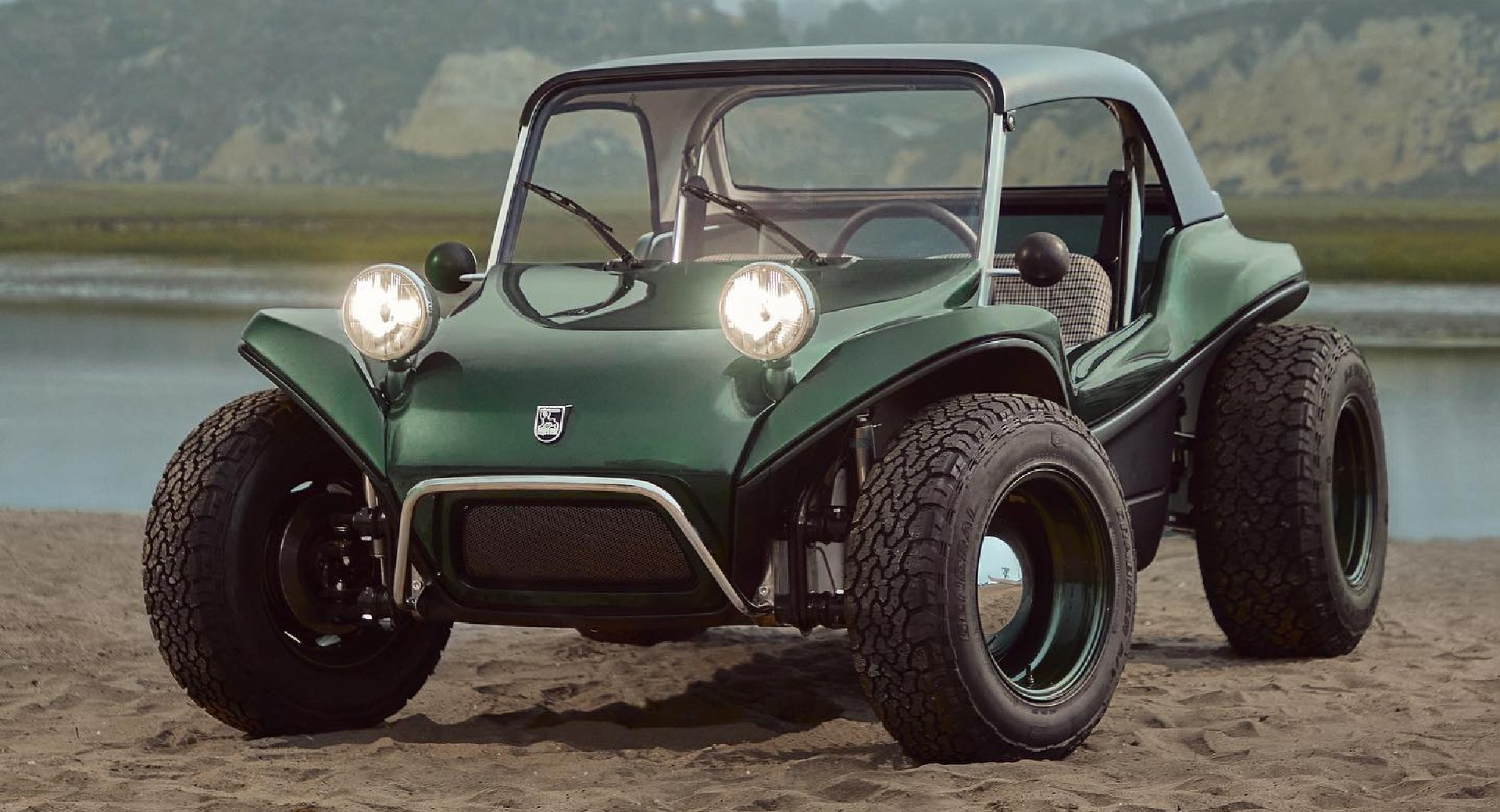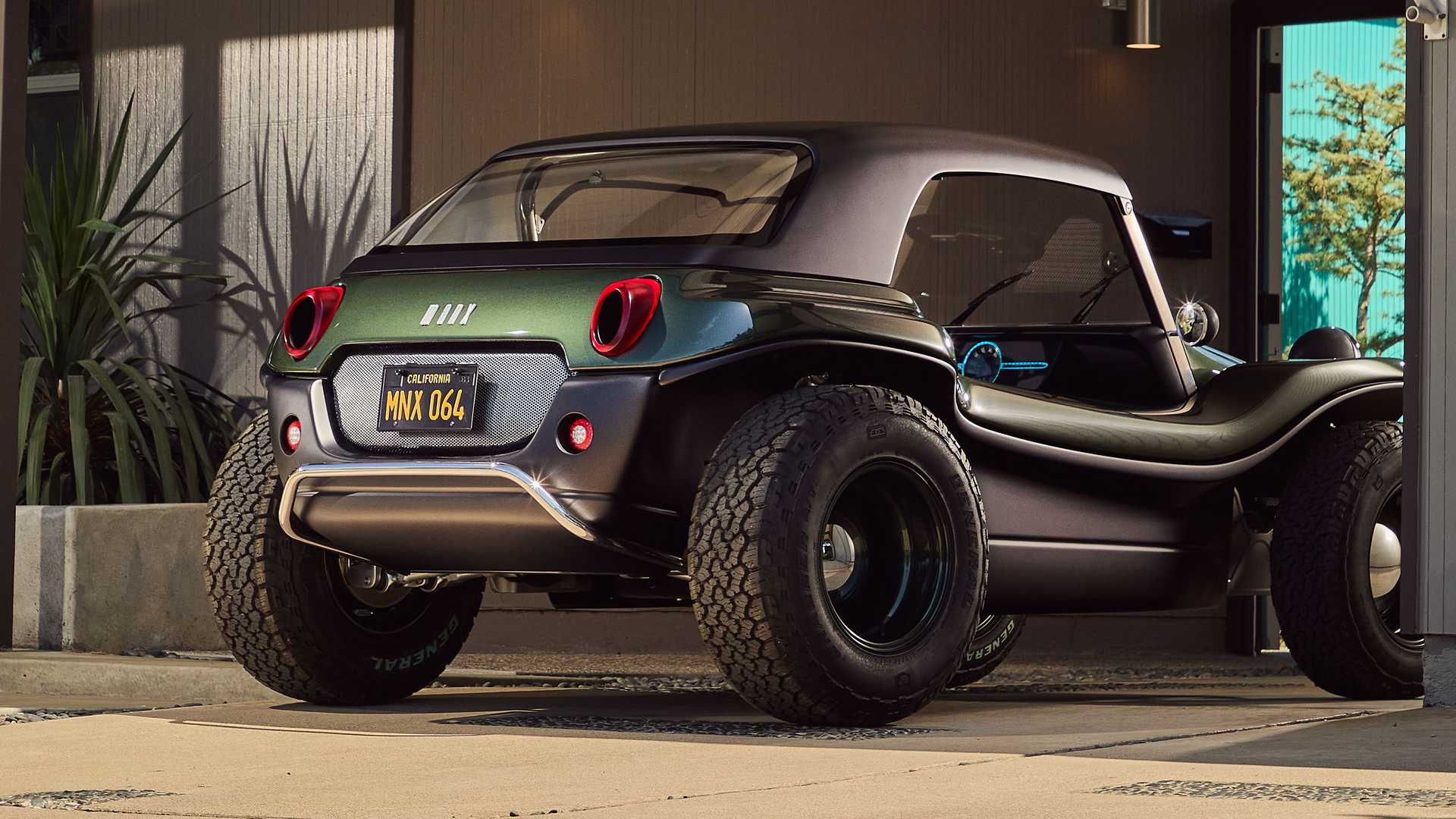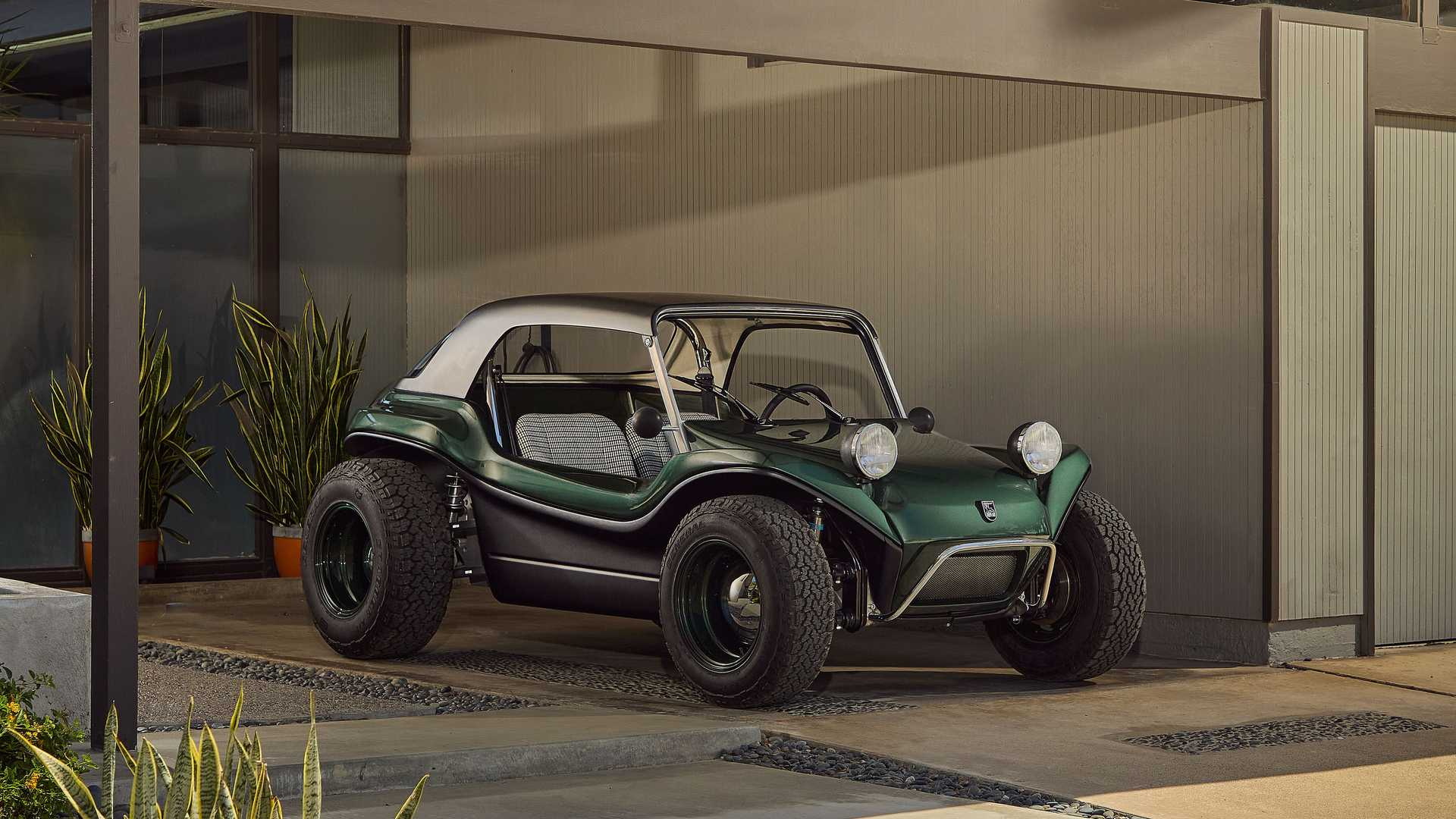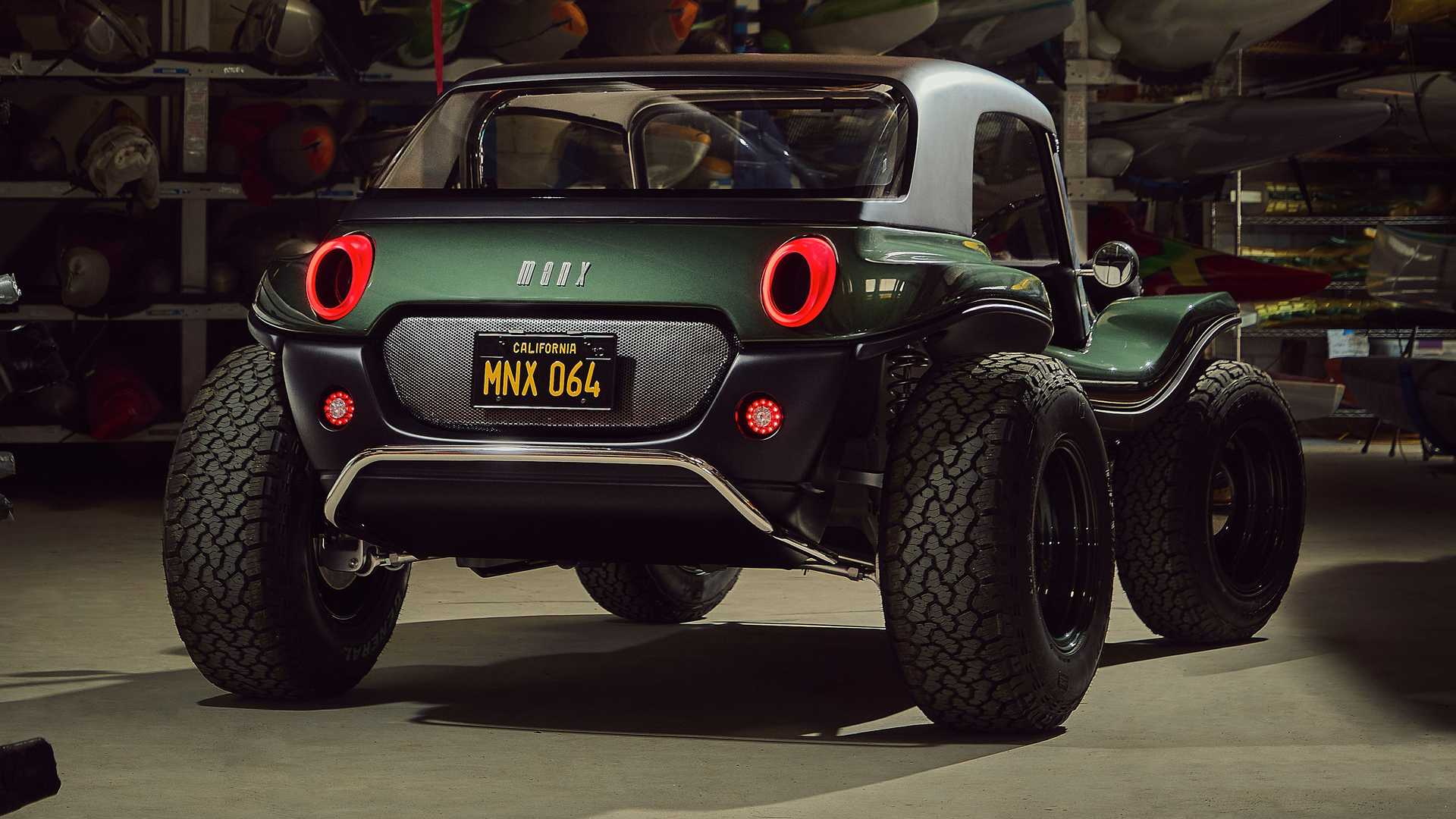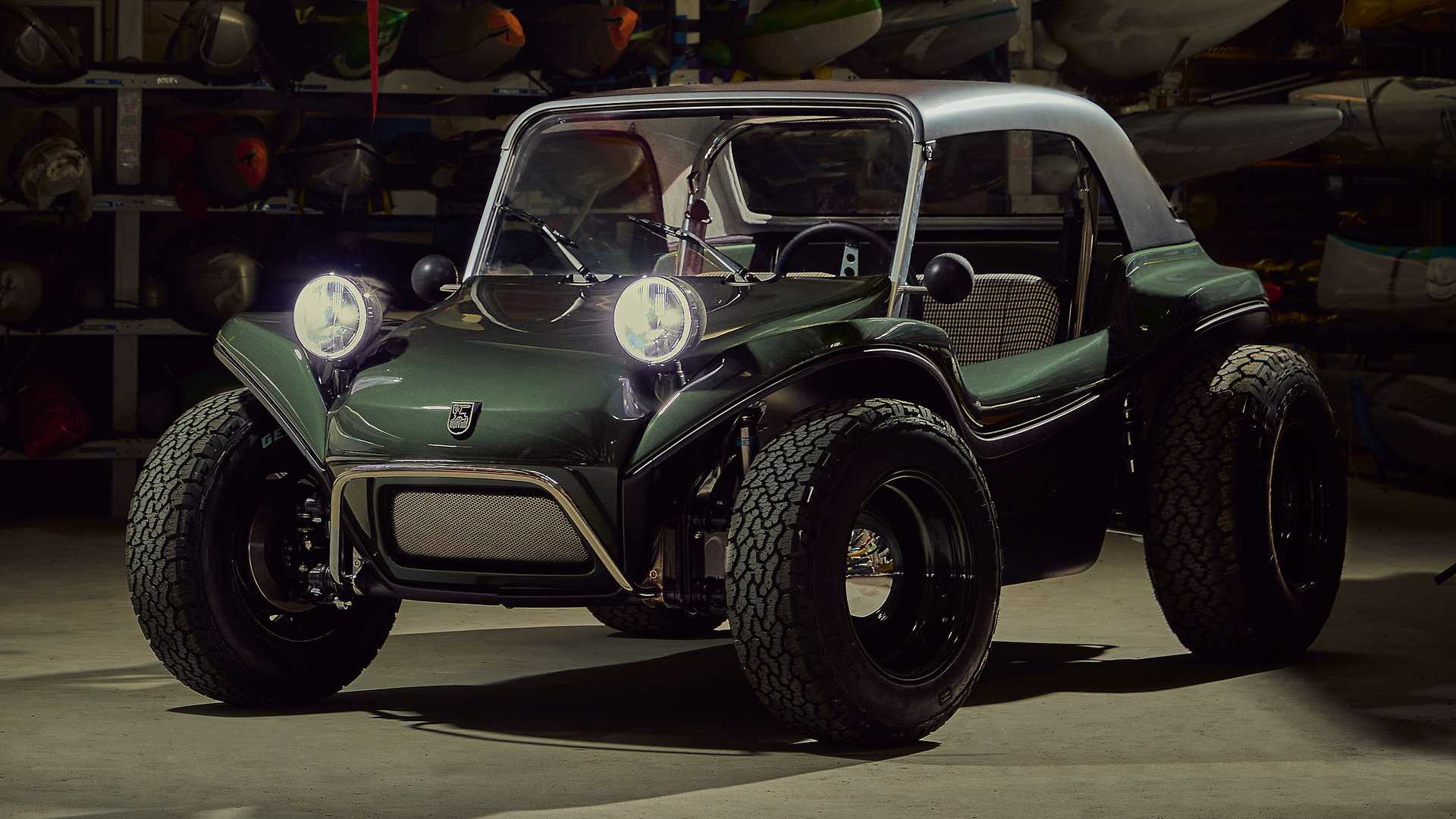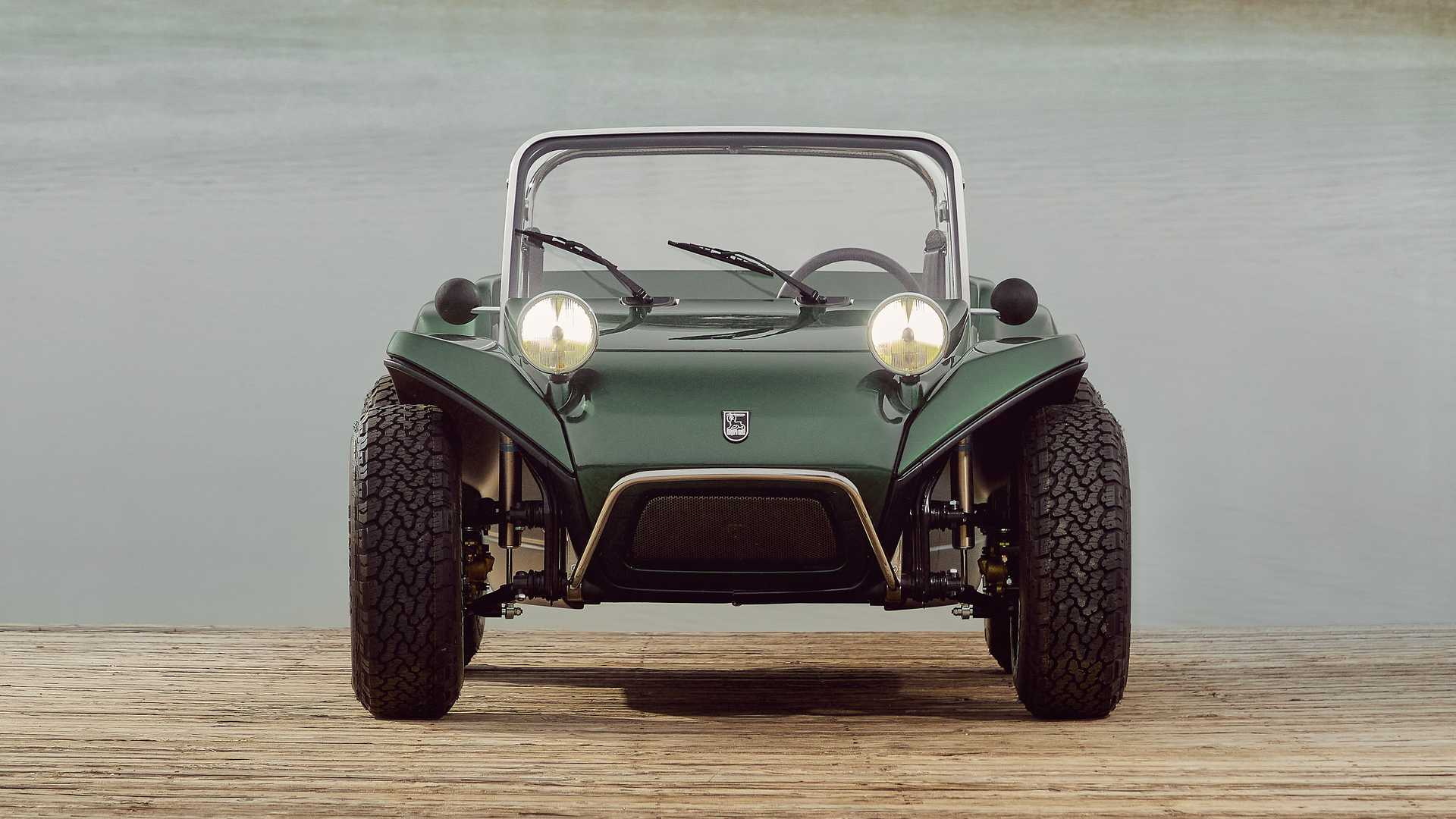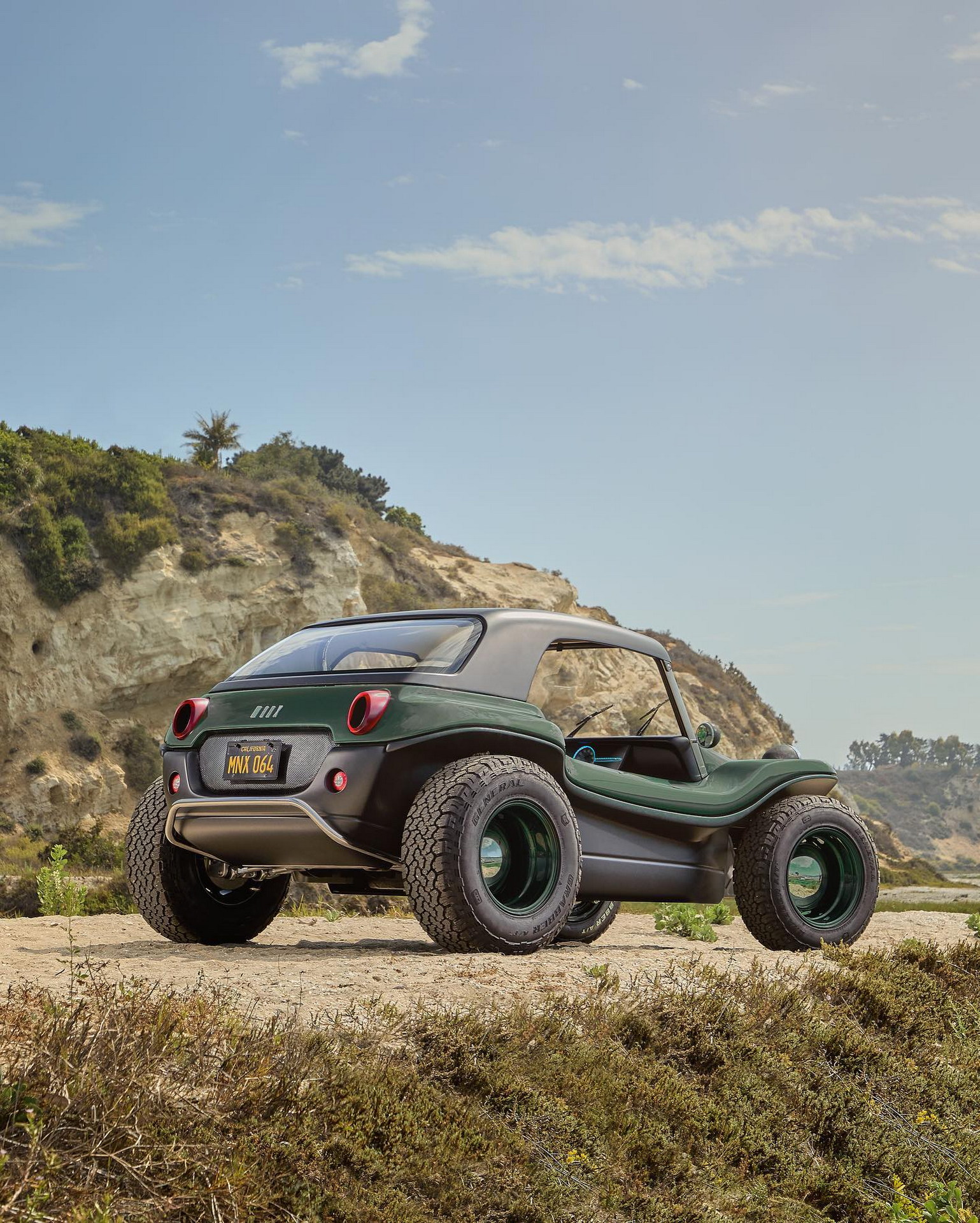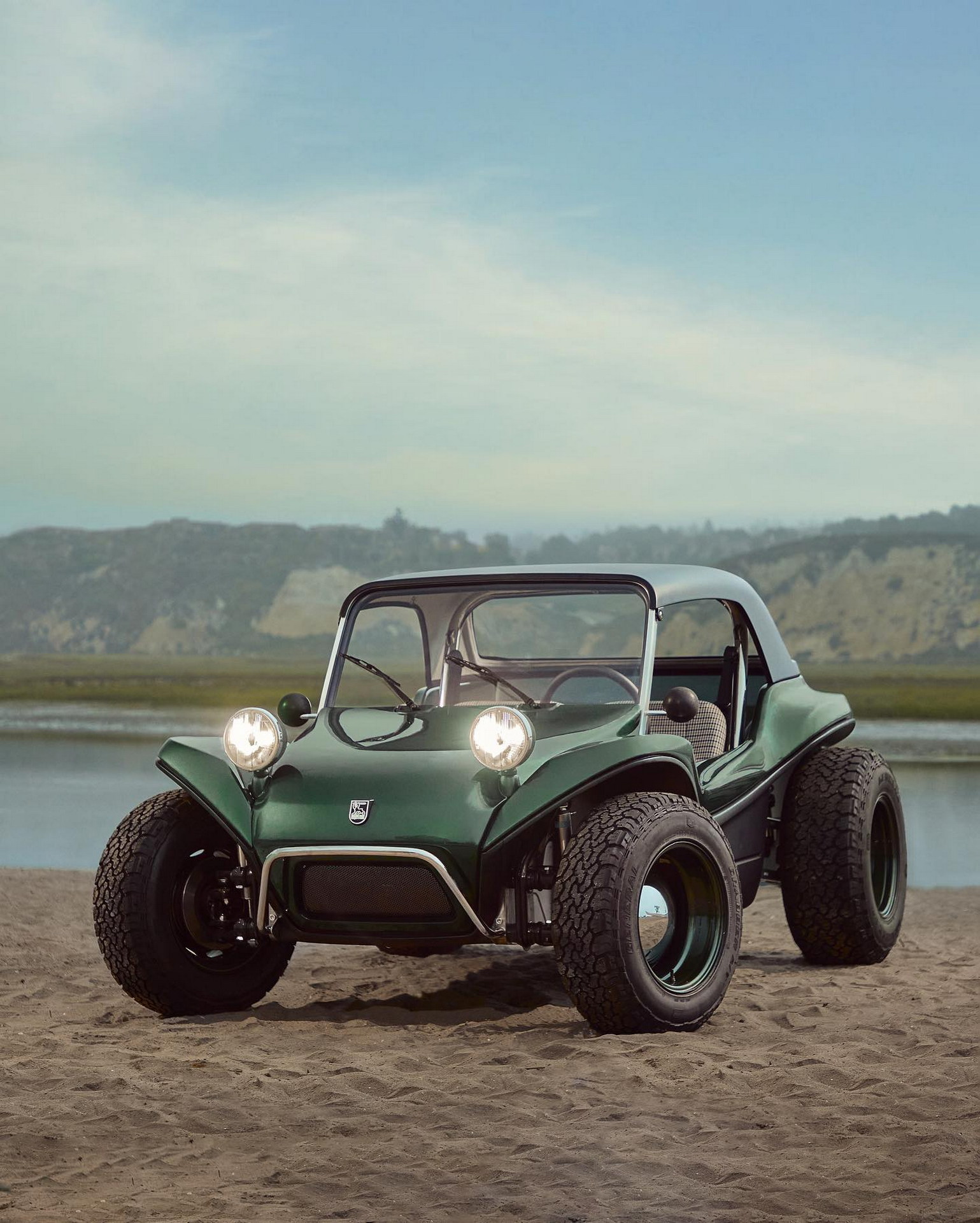Meyers Manx, the iconic VW Beetle-based fiberglass dune buggy kit car from 1964, is getting an all-new generation fitted with a fully electric powertrain. The reborn Meyers Manx 2.0 will make its debut at Monterey Car Week in California, retaining the unique style and character of its predecessor, minus the air-cooled combustion engine.
Bruce Meyers, the designer of the original buggy, sold the company in 2020 before passing away in 2021, aged 94. The firm now belongs to Trousdale Ventures, with Philip Sarofim, founder and CEO, being an automotive enthusiast. The new generation is penned by Freeman Thomas, current CEO of Meyers Manx, known for his design work to iconic modern vehicles like the Audi TT and the New Beetle.
Also Read: VW ID Buggy Concept Is A Modern Day Meyers Manx
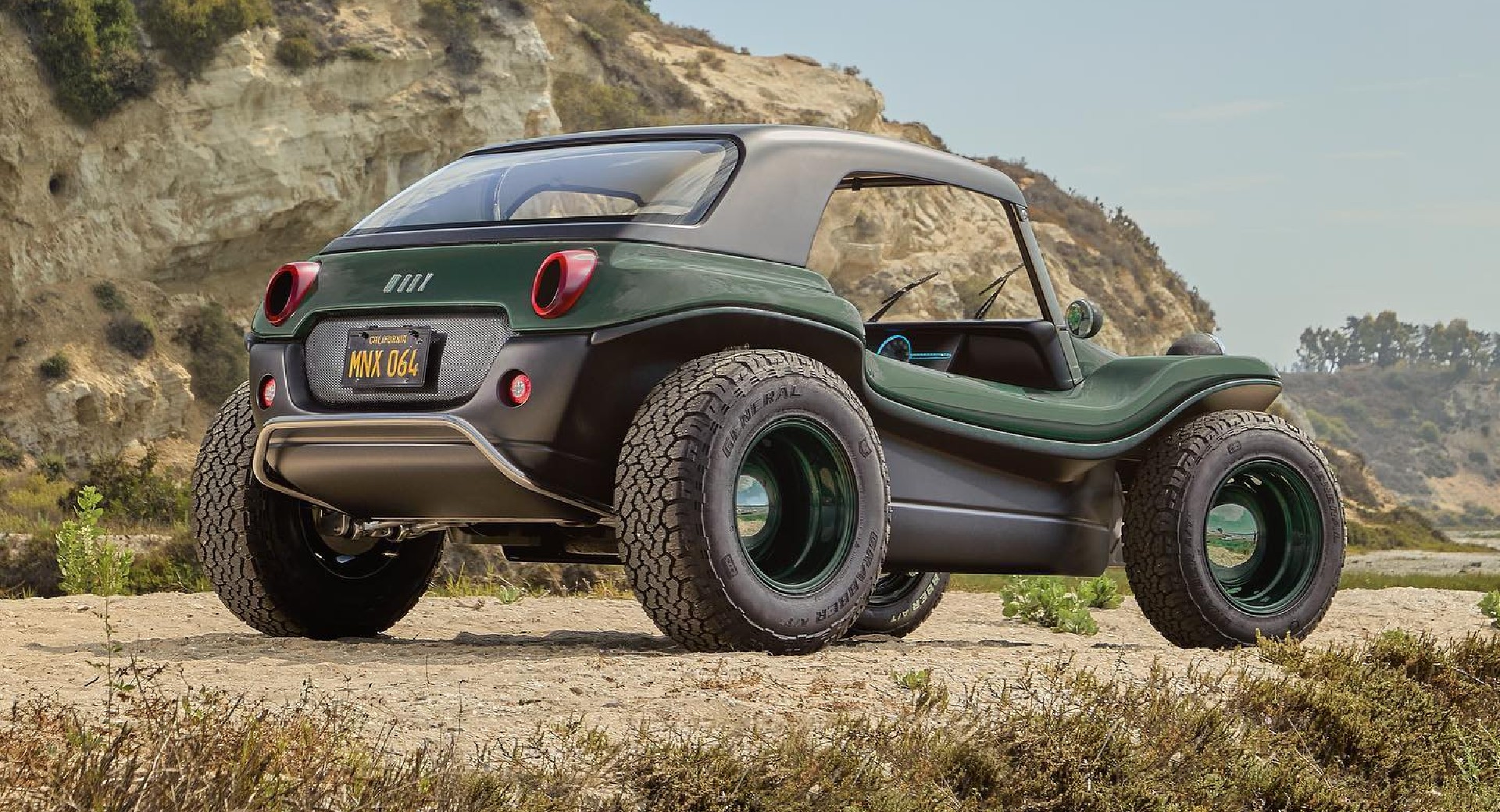
The Meyers Manx 2.0 doesn’t have a combustion engine pocking out of the rear end, but other than that, it looks like an evolution of the original.
Unlike the VW ID. Buggy concept that premiered in 2019 as a modern reinterpretation of the original, the Meyers Manx 2.0 stays closer to the old recipe looking like a proper homage. It retains a single-piece bodywork with pronounced fenders, round headlights poking out of the bonnet, exposed wheels, a removable hardtop, and protective metal bars on both ends. Inside we find a single instrument on the retro-flavored dashboard, a three-spoke steering wheel, and two seats without headrests.
Sarofim told TechCrunch that while they wanted to retain the style and the exact footprint of the original, every part of the Meyers Manx 2.0 has been re-engineered, with the exception of the headlight housings.
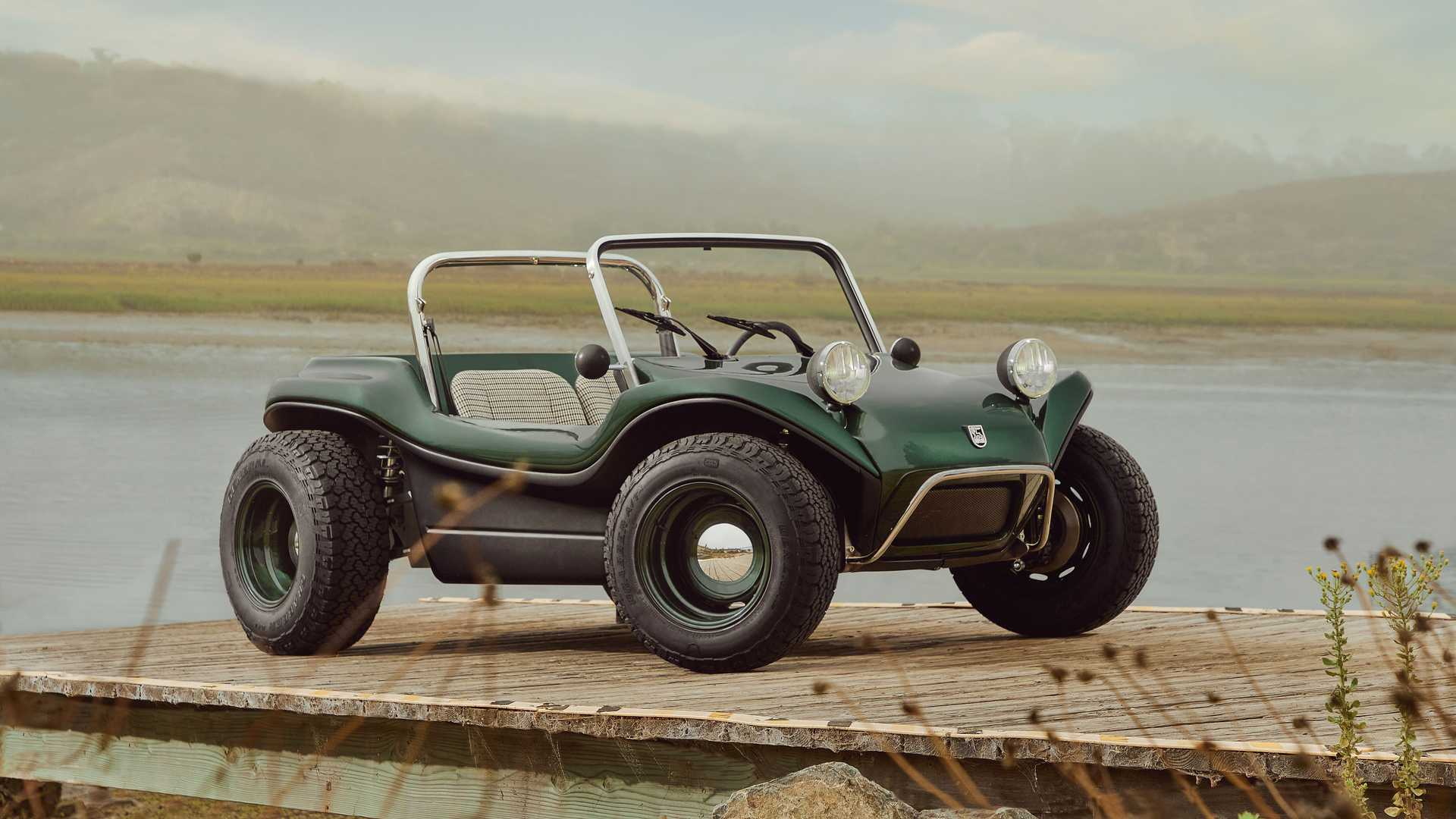
Despite the familiar styling, the headlight housings are the only parts that have been carried over from the first generation.
The model is not mechanically related to the old Beetle anymore. Instead, it is based on an aluminum monocoque architecture coming from a yet-unnamed supplier. A set of rear-mounted electric motors send up to 202 hp (151 kW / 205 PS) of power and 240 lb-ft (325 Nm) of torque to the rear wheels. There are two different lithium-ion battery packs with a capacity of either 20 kWh for a 150-mile (241 km) range, or 40 kWh for a 300-mile (483 km) range.
The estimated figures for the electric range sound quite impressive for the size of the battery but this is because the Meyers Manx 2.0 is quite lightweight. More specifically, the 20 kWh version tips the scales at 1,500 pounds (680 kg) while the 40 kWh version weighs 1,650 pounds (748 kg). The latter, which is also the most powerful, can accelerate from 0-60 mph (0-96 km/h) in 4.5 seconds.
Meyer Manx will produce the first 50 units of the buggy in 2023, with the initial batch of owners being involved in the development, highlighting any glitches and receiving fixes through over-the-air updates. The regular series production is set to begin in 2024 in the US. Pricing will be announced at a later date, probably at The Quail Motorsports Gathering event where the company will show the real-life prototype of the Meyer Manx 2.0 and start taking pre-orders. As reported by TechCrunch, the target group will be “the wealthy with multiple homes and multiple cars”, making for the perfect vehicle for the garage of the vacation house. Meyer Manx is also working on other vehicles set to be unveiled in the next few years.
Photo Credit: @meyersmanx and @evankleinfilms




